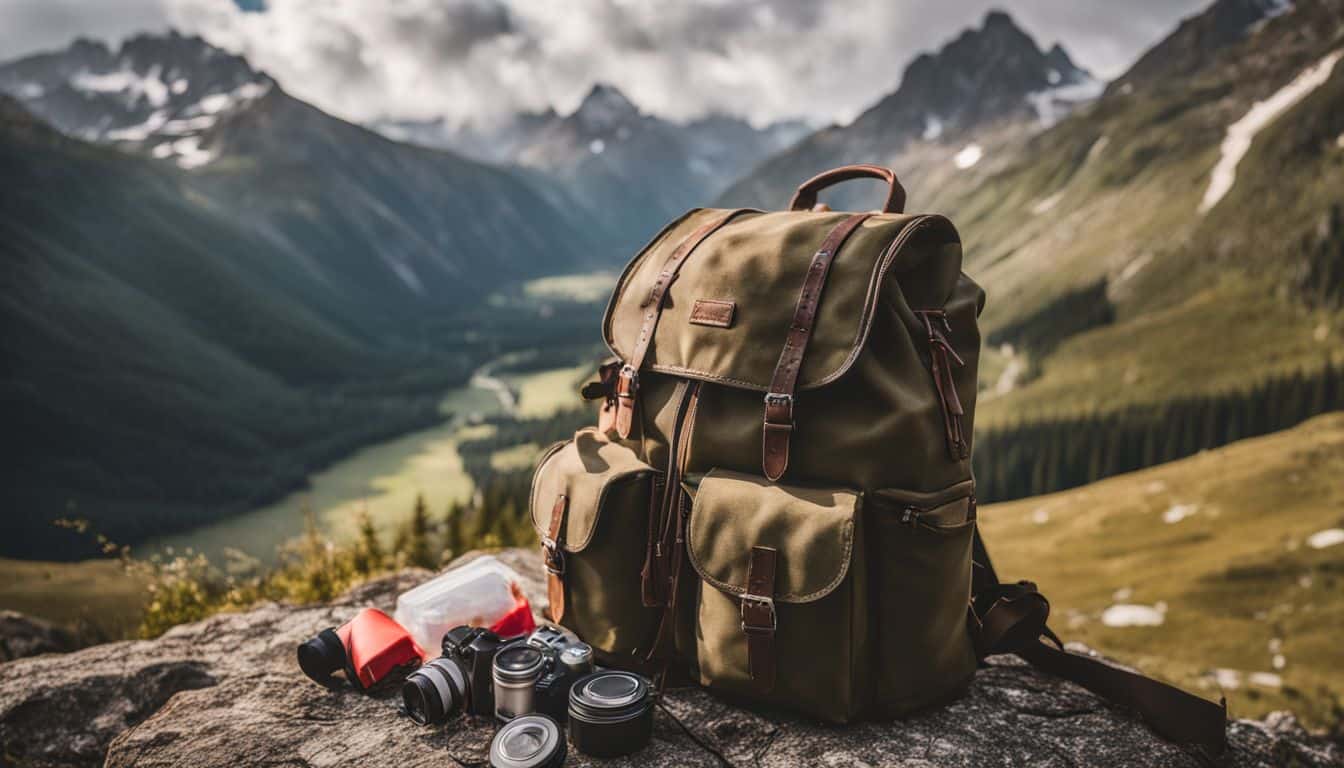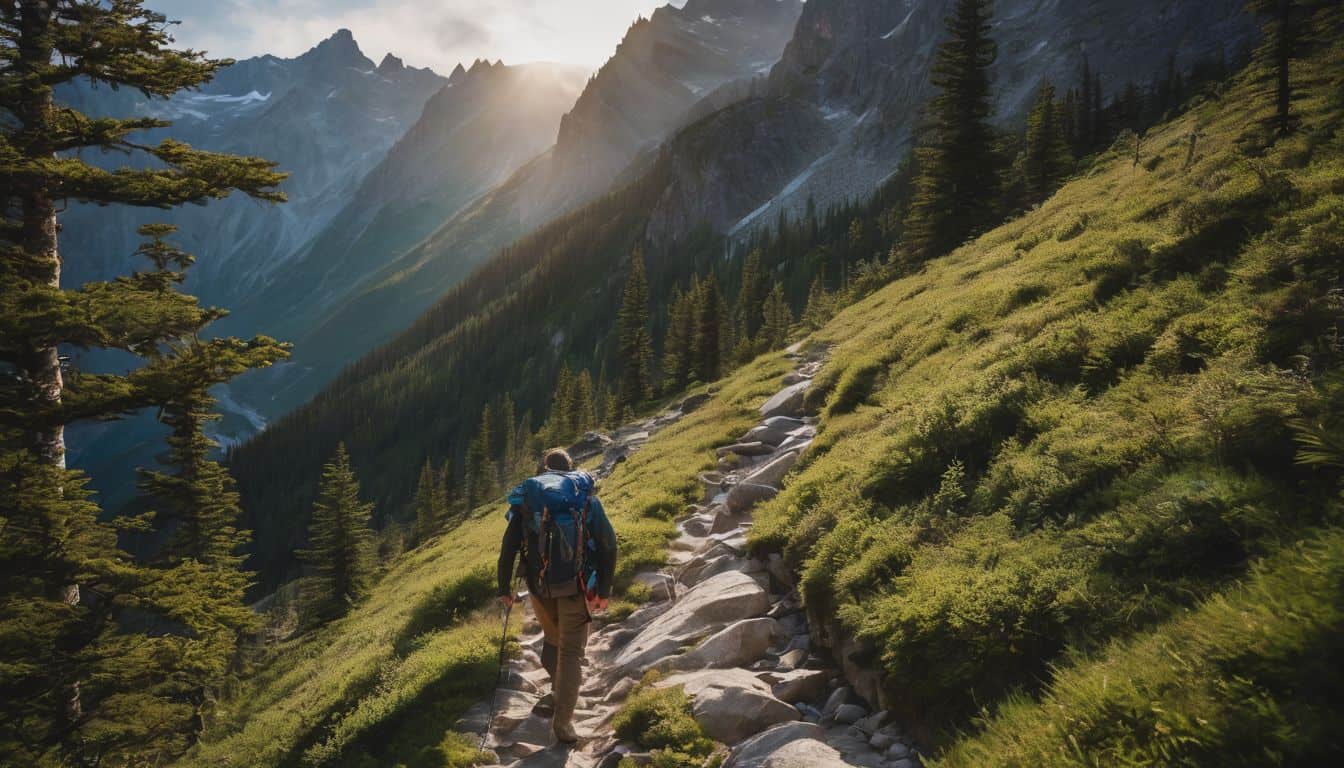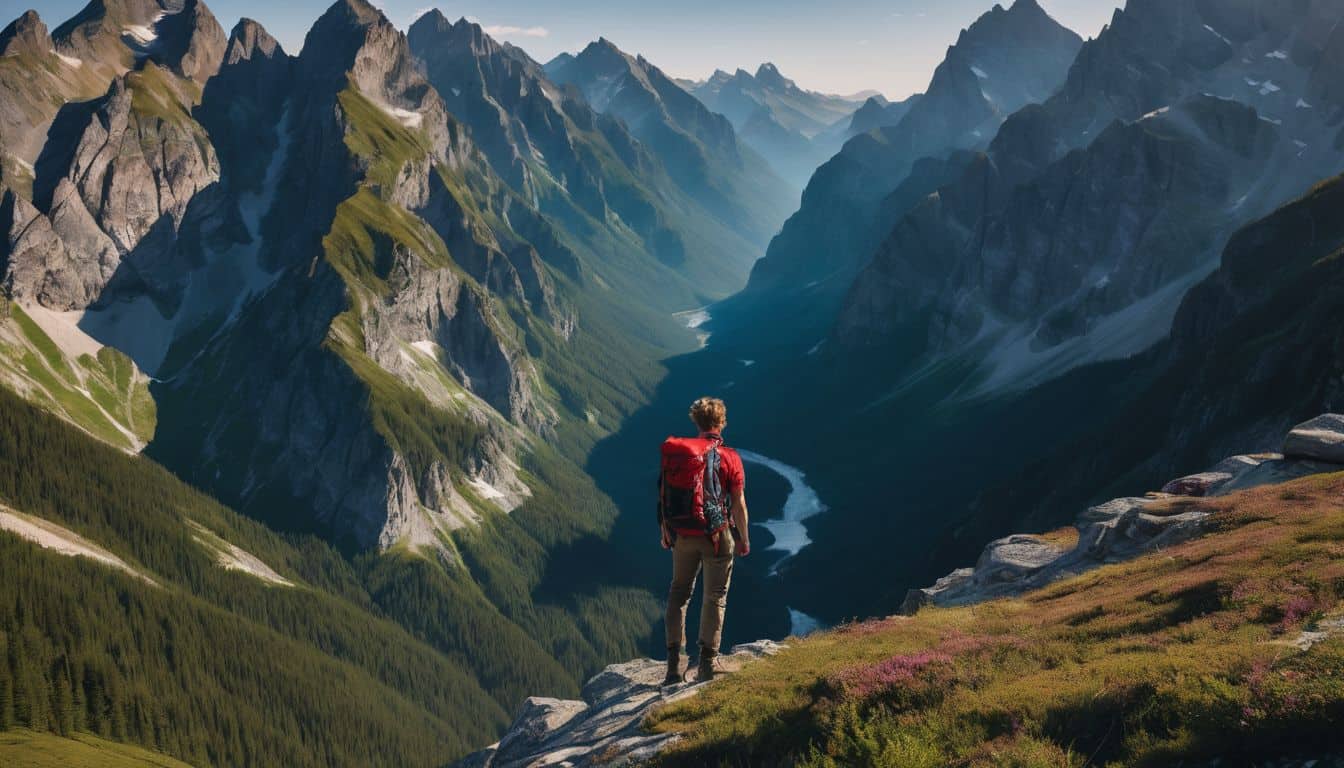Do you ever find yourself tossing and turning at night, fretting over what could happen in an emergency situation? Believe me, you’re not alone – it’s a worry that can creep up on the best of us.
Alarming as it may sound, research reveals that more than half of us Americans don’t have necessary survival gear essentials within easy reach for when disaster strikes. But fear not! This blog is here to help change that statistic with practical tips and a thorough breakdown of seven must-have survival essentials.
So get ready to take control of your preparedness and let’s dig into this vital knowledge together!
Key Takeaways
- Understand the different types of survival kits available, such as emergency kits, bugout bags, and wilderness survival kits, so you can choose the best one for your needs.
- Make sure your basic survival kit is well – stocked with essential supplies like water, food, shelter, first aid materials, and communication equipment.
- Consider adding suggested additions to your survival kit like personal documents, extra batteries, a multi-purpose tool, and sanitation items to enhance your preparedness.
- Include extra supplies in your survival kit such as additional batteries, a first aid kit, medications, a multi-purpose tool. These will increase your chances of surviving an emergency situation.
Basics of Making a Survival Kit
When it comes to making a survival kit, there are different types to consider. From basic kits that include essential supplies to comprehensive ones with additional items, your choice depends on your needs and preferences.
Additionally, you’ll want to ensure you have the basic survival kit supplies such as water, food, shelter, first aid materials, and communication equipment. To take your survival kit up a notch, consider adding suggested additions like extra batteries, fire-starting tools, maps and navigation tools.
It’s important to have a full home survival kit checklist in place so you’re well-prepared for any situation that may arise.
Types of Survival Kits
There are many types of survival kits. You should understand these types to pick the best one for you.
- Emergency Kits: These kits are for sudden events like a power cut or a flat tire.
- Disaster Preparedness Kits: Use these kits when bad things happen, like tornados or floods.
- Bugout Bags: If you need to leave home fast, take this bag with you.
- Go bags: This is another name for a bugout bag.
- Wilderness Survival Kits: Take this kit when going into the wild for safety.
- Outdoor Survival Kits: This kit helps you stay safe when out in nature.
- Compact Survival Kits: This small kit fits easily in your pocket or purse.
- Urban Survival Kits: Use this kit when living in a big city to keep safe.
- Camping Survival Kits : Use it while camping for safety and comfort.
Basic Survival Kit Supplies
I feel excited every time I talk about the basic survival kit supplies. This bundle is seen as the first step in setting up for disaster readiness.
Suggested additions for your Survival Kit
I want to share some items that you may want to add to your survival kit. These are not basic needs, but they can help in a pinch.
- Personal documents: This includes medication lists, proof of address, passports, and birth certificates.
- Insurance cards: Have a copy of your health insurance card handy.
- Emergency savings: It’s a good idea to have enough cash for three to six months or more of living expenses.
- Special tools: A survival Swiss/army knife and pliers can be very useful.
- Light source: Keep a tactical flashlight and extra batteries in your kit.
- Water supplies: Clean water is vital, so add some bottles or purification tablets.
- Essential medications: If you take any daily medicines, make sure you have extra in your kit.
- Travel documents: If you must leave the country quickly, having these ready could save time.

Extra Supplies for a Survival Kit
In addition to the basic supplies for a survival kit, there are some extra items that you should consider having. These extra supplies can help increase your chances of survival in an emergency situation. Here are some essential extra supplies to include in your survival kit:
- Extra batteries: Make sure you have extra batteries for any electronics or devices in your kit, such as flashlights or radios. These will come in handy if the original batteries run out.
- First aid kit: It’s important to have a well-stocked first aid kit in your survival kit. This should include bandages, antiseptic wipes, pain relievers, and any necessary medications.
- Medications: If you take any prescription medications, make sure to include a 7-day supply in your kit. This way, you’ll have enough medication to last until help arrives or until you can get more.
- Multi-purpose tool: A multi-purpose tool can be incredibly useful in a survival situation. Look for one that includes features like a knife, screwdriver, pliers, and can opener.
- Sanitation and personal hygiene items: Don’t forget about personal hygiene when putting together your survival kit. Include items like toilet paper, wet wipes, hand sanitizer, and feminine hygiene products.
The full Home Survival Kit Checklist
Creating a full home survival kit is a critical step in ensuring you and your family are prepared for any emergency. The following checklist provides a comprehensive list of supplies you may need to survive for several days after a natural disaster or other emergency.
| Category | Items |
|---|---|
| Food and Water | Non-perishable packaged or canned food, bottled water, water purification tablets |
| First Aid Supplies | Adhesive bandages, antibiotic ointment, antiseptic wipes, tweezers, medical tape, pain relievers, prescription medication |
| Hygiene Supplies | Toilet paper, moist towelettes, garbage bags, sanitary napkins, soap, toothpaste, hand sanitizer |
| Safety and Security Equipment | Whistle, multi-tool, rope, duct tape, survival knife, dust mask, plastic sheeting |
| Communication Equipment | Cell phone charger, emergency radio, two-way radios, emergency contact list |
| Shelter and Clothing | Emergency blanket, sleeping bag, rain poncho, warm clothing, sturdy boots |
| Fire and Light | Waterproof matches, candles, flashlight, extra batteries |
| Documents and Navigation Tools | Copies of important documents, map of your area, compass, pen and paper |
| Miscellaneous Supplies | Can opener, utensils, plates, cups, games or activities for children, pet supplies |
Remember, this list is based on a family of four surviving for seven to ten days. You should adjust it according to your family’s specific needs and the nature of potential emergencies in your area. Keep these supplies in an easy-to-carry emergency preparedness kit, so you can use them at home or take them with you in case you have to evacuate.
Communication Equipment

Communication equipment is essential in any survival kit. During emergencies, having alternative forms of communication can be a lifesaver. Radios, mobile phones, walkie-talkies, and two-way radios are some examples of communication devices you should consider including in your kit.
These tools allow you to stay connected with others and receive important information during a crisis. In addition to personal communication devices, public address systems and wireless communication options like satellite phones can also be valuable.
Remember to have spare batteries or alternative power sources for these devices to ensure they work when needed most.
Hygiene and First Aid Supplies
Hygiene and first aid supplies are crucial for survival in emergency situations. Here’s what you need to include in your survival kit:
- Bandages: Make sure you have a variety of bandages, including adhesive strips, gauze pads, and medical tape.
- Washcloths: These are important for keeping yourself clean and practicing good hygiene.
- Antibacterial products: Pack some hand sanitizer or antibacterial wipes to keep germs at bay.
Safety and Security Supplies
Safety and security supplies are crucial for ensuring your survival in any emergency situation. Here are the essential items you should include in your survival gear:
- Emergency preparedness supplies: These include flashlights, batteries, a whistle, and a multi-tool. They will help you stay safe and navigate through dark or challenging situations.
- Protective equipment: It’s important to have items like gloves, goggles, and face masks to protect yourself from debris, chemicals, or harmful substances.
- First aid supplies: A well-stocked first aid kit is a must-have. Include bandages, gauze pads, adhesive tape, antiseptic wipes, and over-the-counter medications for pain relief.
- Self-defense tools: In case of any threats or dangerous encounters, carry self-defense tools such as pepper spray or personal alarms to protect yourself.
- Security measures: Take preventative measures by including items like locks or barricade devices for securing doors and windows.
Food and Water Essentials
Food and water are crucial for survival in any emergency situation. Here are the essential items you should have in your survival kit:
- Non-perishable food: Stock up on canned goods, dried fruits, energy bars, and other non-perishable food items that have a long shelf life. These can provide sustenance during an emergency when fresh food may not be available.
- Water supply: Ensure you have an adequate supply of clean drinking water. The general guideline is to have at least one gallon of water per person per day for hydration and cooking purposes.
- Cooking supplies: Pack a portable stove or camping cookware that you can use to prepare meals if necessary. Don’t forget to include a can opener and utensils.
- Sanitation supplies: Include hygiene items like wet wipes, toilet paper, hand sanitizer, soap, and feminine products. These will help maintain cleanliness and prevent the spread of germs.
- Medications: If you take prescription medications, make sure to pack a sufficient supply in your survival kit. Also consider including over-the-counter medications for common ailments like pain relievers and antacids.
- Consumables: Remember to include paper plates, cups, plastic cutlery, and trash bags. These items will make it easier to handle waste and maintain cleanliness during an emergency.
Fire and Light Survival Kit Gear
Fire and light essentials are crucial in a survival kit. Here are some key items to include:
- Fire starters: These can be lighters, matches, or flint and steel with a magnesium strip.
- Ignition tools: Having a reliable way to start a fire is important. Consider including spark rods or fire pistons.
- Tinder: Lightweight and compact options like cotton balls smeared with petroleum jelly or dryer lint make great tinder.
- Emergency light sources: Carry compact flashlights, headlamps, or glow sticks for illumination.
- Firemaking equipment: Pack a small folding stove or portable campfire grill for cooking meals.
- Survival tools: Keep multi-purpose tools like Swiss army knives or multi-tools handy for various tasks.
- Outdoor knives: A durable and sharp knife is essential for cutting wood, preparing food, and other survival needs.
- Reflective gear: Tuck reflective tape or markers into your kit to increase visibility during rescues.
- Shelter building supplies: Include lightweight tarps, paracord, bungee cords, duct tape for constructing shelters.
- Lightweight camping gear: Consider including camping lanterns or solar-powered lights for extended stays.
Shelter and Clothing Supplies
Clothing that helps you blend in with your surroundings is considered some of the best survival gear. Here are some shelter and clothing supplies for your survival kit:
- Camouflage clothing: Helps you stay hidden from potential threats.
- Outdoor gear: Including sturdy boots, hats, and gloves to protect yourself from the elements.
- Emergency preparedness: Pack lightweight, quick-drying clothing suitable for different weather conditions.
- Survival equipment: Tarp or emergency blanket to create a makeshift shelter.
- Protective clothing: Consider items like goggles, masks, or helmets for extra protection.
- Waterproof supplies: Keep rain gear and waterproof bags to protect your belongings.
- Emergency shelter: A tent or bivvy sack can provide temporary shelter if needed.
- Emergency clothing: Have extra layers of warm clothing for colder temperatures.
Documents and Navigation Tools
Documents and navigation tools are crucial for survival in emergency situations. Here are some essential items to include in your survival kit:
- Identification documents (ID, passport, etc.)
- Important contact information (emergency contacts, family members)
- Maps of the area (topographic maps can be useful for navigation)
- Compass for accurate direction finding
- GPS device or smartphone with GPS capability
- Whistle for signaling
- Signal mirror to attract attention
- Pen and paper for taking notes or leaving messages
- Waterproof container to protect documents and equipment from water damage
Miscellaneous Survival Kit Supplies
In addition to the basic survival kit supplies, there are a few miscellaneous items that can come in handy in emergency situations. Here are some suggestions:
- Duct tape: This versatile tool can be used for repairs, securing items, and even medical purposes.
- Multi-tool or Swiss Army knife: A compact tool with multiple functions like a knife, scissors, screwdriver, and more.
- Cash: In case of power outages or other emergencies where credit cards may not be accepted.
- Plastic bags: Useful for storing food, keeping things dry, or even makeshift toilets.
- Whistle: A loud whistle can help attract attention if you’re lost or need assistance.
- Paracord or rope: Can be used for building shelters, tying things together, and more.
- Waterproof matches or lighter: Essential for starting fires in wet conditions.
- Compass: A navigation tool that can help you find your way if you’re lost.
- Zip ties: These can secure items or even act as temporary handcuffs if needed (in extreme circumstances).
- Emergency blanket or space blanket: Reflects body heat to keep warm in cold weather.
Conclusion on Survival Gear Essentials
In conclusion, having the right survival gear is crucial for excelling in challenging situations. By following the guide and checklist provided, you can ensure that your survival kit is equipped with the essential items needed for food, water, first aid, shelter, communication, and more.
Remember to stay prepared and be ready to face any unexpected circumstances with confidence.
FAQs on Survival Gear Essentials
1. What are survival gear essentials?
Survival gear essentials are items or tools that can help you survive in emergencies or challenging situations, such as a first aid kit, water filter, flashlight, and knife.
2. How do I choose the right survival gear?
To choose the right survival gear, consider factors like your specific needs (climate, location), durability of the items, ease of use, and reviews from reliable sources.
3. Can I excel in survival situations without any survival gear?
While having survival gear is recommended, it is possible to excel in certain survival situations with basic knowledge and skills like finding shelter or food using natural resources.
4. How can I prepare for emergencies using these 7 ways to excel?
You can prepare for emergencies by familiarizing yourself with essential skills such as starting a fire without matches or creating makeshift shelters with available materials.
5. Where can I find affordable and quality survival gear essentials?
Affordable and quality survival gear essentials can be found online through various retailers specializing in outdoor equipment or at local stores that cater to camping and hiking needs.





Leave a Reply